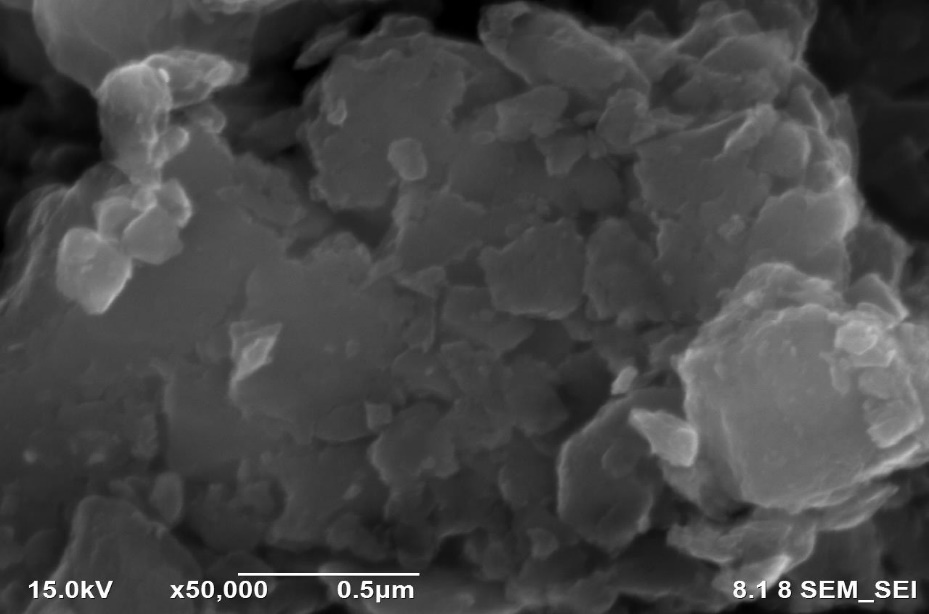Laboratory Analysis Using Coconut Shell from Bekasi Regency for Drilling Mud Additives on Oil and Gas Wells
Abstract
Drilling activity in deep formation usually gave greater challenges to the engineer due to its high pressure and temperature. To minimize this problem, drilling mud needs to be modified into a certain condition where it should be performed well in those extreme situations. The drilling mud quality does not significantly decrease, it simply requires better quality of mud at certain points at high temperatures. Certain additives are needed to maintain their performance. Therefore, this study aims to improve the quality of drilling mud by adding additives from carbon powder originating from coconut shells. Coconut shells are burned and processed until they become nanometer-sized, then used as additives in drilling mud. Then, several analyses such as XRD, SEM, as well as the rheology of drilling mud are evaluated. XRD analysis result shows the element from the coconut shell powder was graphite. Laboratory analysis results indicate that drilling mud with coconut shell powder provides better rheological value compared to the same drilling mud without the additives. It was observed that the mud with coconut shell powder performed better at high pressure.
Full text article
References
Agwu, O. E., & Akpabio, J. U. (2018). Using agro-waste materials as possible filter loss control agents in drilling muds: A review. Journal of Petroleum Science and Engineering, 163, 185–198. https://doi.org/10.1016/j.petrol.2018.01.009
Akbar, R., Hamid, A., & Sitaresmi, R. (2019). The Effect of Coconut Fibres, Banana Trunk Peel and Baggasse on the Lost Circulation of the Drilling Mud. Journal of Earth Energy Science, Engineering, and Technology, 2(2). https://doi.org/10.25105/jeeset.v2i2.4674
Al-Hameedi, A. T. T., Alkinani, H. H., Dunn-Norman, S., Alashwak, N. A., Alshammari, A. F., Alkhamis, M. M., … Ashammarey, A. (2019). Evaluation of environmentally friendly drilling fluid additives in water-based drilling mud. SPE Europec Featured at 81st EAGE Conference and Exhibition. https://doi.org/10.2118/195510-ms
Amanullash, M. (2007). Screening and Evaluation of Some Environment-Friendly Mud Additives To Use in Water-Based Drilling Muds. E&P Environmental and Safety Conference. https://doi.org/10.2118/98054-MS
Ekeinde, E. B., Okoro, E. E., Dosunmu, A., & Iyuke, S. (2019). Optimizing aqueous drilling mud system viscosity with green additives. Journal of Petroleum Exploration and Production Technology, 9(1), 315–318. https://doi.org/10.1007/s13202-018-0481-0
Ewy, R. T., & Morton, E. K. (2008). Wellbore Stability Performance of Water Base Mud Additives. SPE Annual Technical Conference and Exhibition. https://doi.org/10.2118/116139-MS
Fitrianti, F. (2012). Pengaruh Lumpur Pemboran Dengan Emulsi Minyak Terhadap Kerusakan Formasi Batu Pasir Lempungan (Analisa Uji Laboratporium). Journal of Earth Energy Engineering, 1(1), 67–79. https://doi.org/10.22549/jeee.v1i1.931
Ganesh, H., Sivasankar, P., Pandian, S., & Sircar, A. (2019). Sustainable drilling operations by utilizing waste biomass as a lost circulation additive. Energy Sources, Part A: Recovery, Utilization and Environmental Effects. https://doi.org/10.1080/15567036.2019.1696426
Ghazali, N. A., Alias, N. H., Mohd, T. A. T., Adeib, S. I., & Noorsuhana, M. Y. (2015). Potential of Corn Starch as Fluid Loss Control Agent in Drilling Mud. Applied Mechanics and Materials, 754–755, 682–687. https://doi.org/10.4028/www.scientific.net/AMM.754-755.682
Hamad, B. A., Xu, M., & Liu, W. (2019). Performance of environmentally friendly silica nanoparticles-enhanced drilling mud from sugarcane bagasse. Particulate Science and Technology. https://doi.org/10.1080/02726351.2019.1675835
Inemugha, O., Chukwuma, F., Akaranta, O., & Ajienka, J. A. (2019). Rheological properties of terminalia mantaly exudate as drilling mud additive. SPE Nigeria Annual International Conference and Exhibition. https://doi.org/10.2118/198827-MS
Minaev, K. M., Martynova, D. O., Zakharov, A. S., Sagitov, R. R., Ber, A. A., & Ulyanova, O. S. (2016). Synthesis of Carboxymethyl Starch for increasing drilling mud quality in drilling oil and gas wells. IOP Conference Series: Earth and Environmental Science, 43, 12071. https://doi.org/10.1088/1755-1315/43/1/012071
Novrianti, N., Khalid, I., & Melysa, R. (2018). Performance Analysis of Local Pekanbaru Bentonite for Reactive Solid Application of Mud Drilling. Journal of Earth Energy Engineering, 7(2), 23–32. https://doi.org/10.25299/jeee.2018.vol7(2).2192
Novrianti, N., & Umar, M. (2015). Optimasi Hidrolika Lumpur Pemboran Menggunakan Api Modified Power Law Pada Hole 8½ Sumur X Lapangan Mir. Journal of Earth Energy Engineering, 4(2), 15–28. https://doi.org/10.22549/jeee.v4i2.635
Okon, A. N., Udoh, F. D., & Bassey, P. G. (2014). Evaluation of Rice Husk as Fluid Loss Control Additive in Water-Based Drilling Mud. SPE Nigeria Annual International Conference and Exhibition. https://doi.org/10.2118/172379-MS
Prince, E. I., Dosunmu, A., & Anyanwu, C. (2019). Laboratory study of oil palm kernel shells and mangrove plant fiber banana trunk fiber as lost circulation materials in synthetic based drilling mud. SPE Nigeria Annual International Conference and Exhibition. https://doi.org/10.2118/198733-MS
Samavati, R., Abdullah, N., Tahmasbi, N. K., Hussain, S. A., & Awang, B. D. R. (2014). Rheological and Fluid Loss Properties of Water Based Drilling Mud Containing HCl-Modified Fufu as a Fluid Loss Control Agent. International Journal of Chemical Engineering and Applications, 5(6), 446–450. https://doi.org/10.7763/ijcea.2014.v5.426
Zhang, Z.-L., Zhou, F.-S., Zhang, Y.-H., Huang, H.-W., Shang, J.-W., Yu, L., … Tong, W.-S. (2013). A Promising Material by Using Residue Waste from Bisphenol A Manufacturing to Prepare Fluid-Loss-Control Additive in Oil Well Drilling Fluid. Journal of Spectroscopy, 2013, 370325. https://doi.org/10.1155/2013/370325
Authors
This is an open access journal which means that all content is freely available without charge to the user or his/her institution. The copyright in the text of individual articles (including research articles, opinion articles, and abstracts) is the property of their respective authors, subject to a Creative Commons CC-BY-SA licence granted to all others. JEEE allows the author(s) to hold the copyright without restrictions and allows the author to retain publishing rights without restrictions.




